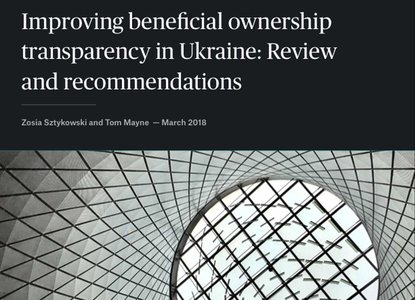What we really mean when we talk about verification: Truth verification (part 4 of 4)
So far in this series on verification of beneficial ownership data, we have given you an overview of what the term really means when applied to beneficial ownership, discussed how to tell if someone is who they say they are and whether they have the right to report beneficial ownership data, and explained the impact in-line validation of data has on data quality.
At every stage we have emphasised that there is no guarantee that any piece of beneficial ownership data gives a true picture of company ownership, but that making the information available as open data significantly increases the difficulties and risks for those who try to lie.
Doing authentication, authorisation, and validation - and doing them well - is not about providing guarantees about the data, but about improving the data quality. This means distinguishing bad data from good, clarity from obfuscation, mistakes from lies, and holding people accountable for their statements. But ultimately criminals, money launderers, corrupt politicians, and others with bad intentions, will lie, and those lies are hard to catch out. In fact, it is close to impossible to know if any beneficial ownership statement is actually true.
In order to understand why, it’s important to consider what has traditionally been offered as ‘proof’ of beneficial ownership to registrars, be they a corporate service provider (CSP) or Companies House.
Shareholder certificates, declarations of trust, and other documents that may be considered ‘proof’ of beneficial ownership are all essentially the same thing: statements about who the beneficial owner of a company or trust is at a point in time. And more than that, they are proofs produced by the very people making the statements (remember, many share certificates these days are printed-out Word documents, and shareholder registers are often Excel spreadsheets).
In other words, they are no more guaranteed to contain the truth than a similar statement made to a centrally-held register. Whether these documents are notarised and certified to contain the truth do not make them any more true. This is not materially different from certifying to a company registrar that the information you are reporting to them is correct.
When it comes to truth verification, one of its fundamental principles is that, in order to verify that a fact is true, it needs to be expressed in at least two different ways. This is not dissimilar to the new best practice of two-step verification for internet accounts (e.g. email). This requires you to verify who you are both through something you know (a password), and something you have (a phone), making it harder for anyone else to access your account.
On the other hand, beneficial ownership is effectively a statement about the material conditions of a company at a point in time. There is no second way to express it, particularly in cases where someone is attempting to hide their identity. No physical asset exists that can serve as proof you own a company. Even with the rise of digital identities and blockchain-like registers, it’s still very difficult to prove that the person is not a nominee, or that no secret side agreement exists giving control or benefit to someone else. The closest we can get is identifying financial activity (e.g. transfers between bank accounts) that links back to the subject being investigated. However, this avenue is only really open to law enforcement agencies - this information isn’t available as a means of verification to the bodies that administer and collate company registers.
Our partners at Global Witness know first hand what it takes to uncover the true owners of a company or resource when they are determined to hide. To take just one example, their 2013 investigation into land sales in Sarawak, Malaysia showed how the country’s company ownership laws could be circumvented using offshoring to allow foreign ‘investors’, lawyers and public officials to make huge profits on land gifted by the state. Uncovering the truth required the Global Witness team to pose as investors and take hidden cameras into secret meetings to obtain evidence that would never show up in a paper trail.
It is because of the resource-intensive nature of these investigations that civil society has called most vocally for public, open data on beneficial ownership. Because although no one can guarantee the truth of what’s reported to a register, this data provides crucial leads and red flags.
The vast majority of companies are above-board businesses that operate ethically. Only a small percentage of corporate vehicles are being abused for criminal or unethical purposes, which their beneficial owners will naturally want to hide.
Here we come full circle to the development of indicators for when beneficial ownership data contains clues that someone is hiding. Every user group, from law enforcement to the private sector, is likely to have their own set of due diligence and red flagging procedures.
One example of a red flag is that a company is deliberately suppressing information on who controls it. Early research from Global Witness shows that many companies in the UK register are doing this. For example, 7,000 companies list a company incorporated in a tax haven as their beneficial owner and hundreds of companies are using circular ownership structures, meaning we have no way of knowing which individuals actually control these companies. Global Witness is developing a system that uses red flags to automatically pick out suspect companies.
It’s important to remember that collecting beneficial ownership data is not an end in itself - it must be designed from the ground up to meet the needs of users. The datasets we produce must lend themselves to the development of red flags, and to reducing the number of loopholes and ambiguities that enable individuals to evade accountability.
That’s exactly why we’re developing a beneficial ownership data standard that has been informed by research into the use cases for beneficial ownership data.


